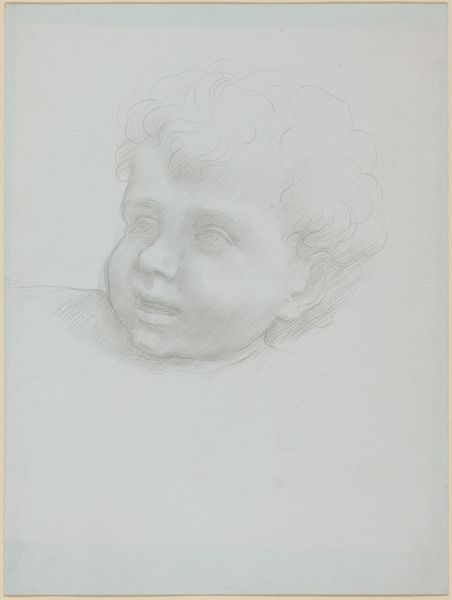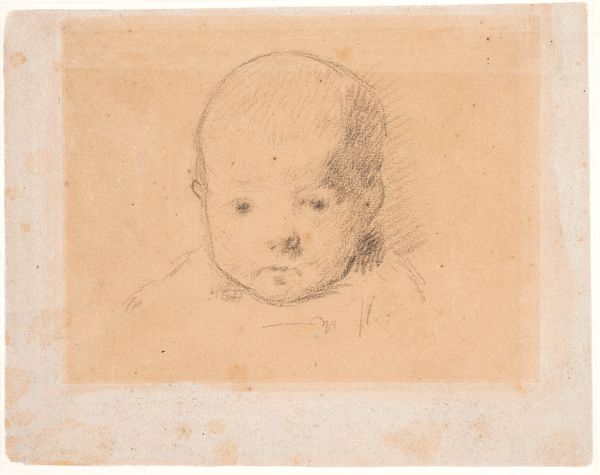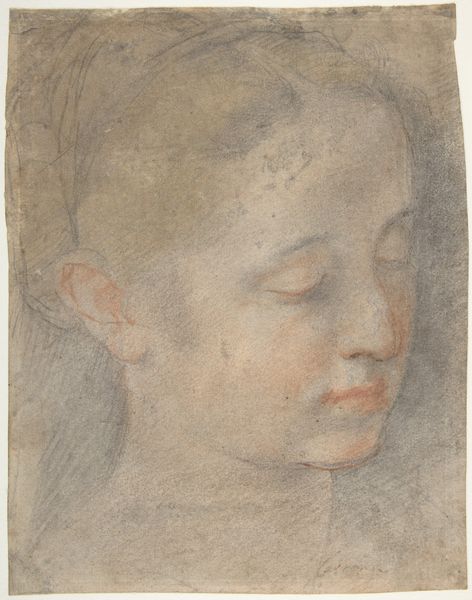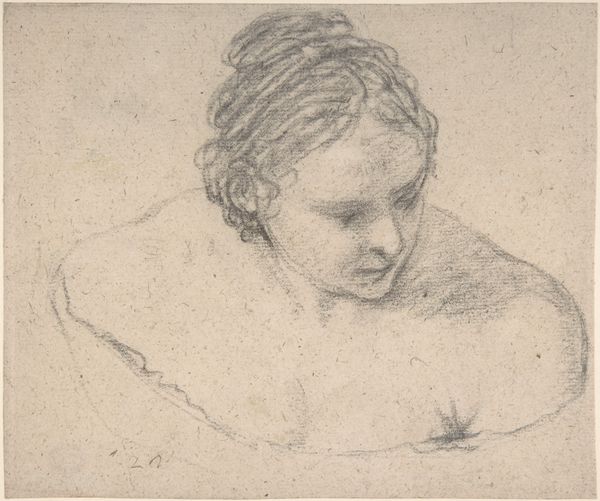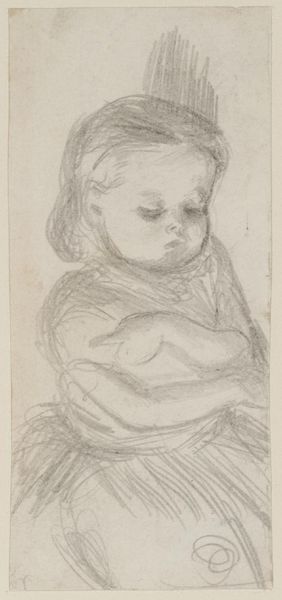
Dimensions: 6 3/16 x 7 7/16in. (15.7 x 18.9cm)
Copyright: Public Domain
Curator: Pompeo Batoni created this work, "Bust-Length Study of a Child," sometime between 1708 and 1787. It’s a delicate drawing, done with pencil on toned paper. Editor: The softness of the medium gives it such a gentle quality. The child seems almost lost in thought, peering down with a look that's both innocent and slightly melancholic. Curator: Right, and Batoni, as an artist deeply embedded in the neoclassical movement, was interested in portraying his subjects with an almost idealized simplicity. Children at this time, though, were rarely seen as individuals. They existed in a social space dictated by expectations around class, gender, and family legacy. Editor: That's interesting, especially when you look at how prevalent cherubic figures were in art—these figures embodying purity and divine innocence. Do you think Batoni is drawing from that wellspring of visual association? The soft curls and rounded face definitely call those kinds of images to my mind. Curator: It’s hard to ignore that lineage, certainly. But also, portraiture of children during the 18th century often served to assert status or dynastic succession. A drawing like this might represent something more, perhaps a brief escape from those constraints. There's a definite tenderness in the portrayal. What cultural scripts is Batoni following? Editor: The tilt of the head and downcast gaze carry so much cultural information. Contemplation, definitely, but also, perhaps, the nascent awareness of social expectation you were speaking of. This child may be realizing what their social station is. Curator: Indeed. The drawing, while seemingly simple, resonates with layers of history and representation. The history of looking—it asks how children, as both subjects and future agents, were envisioned within broader social power dynamics. Editor: I see how that ties to what Batoni must have known about capturing inner states through externally-recognized gestures and symbolism. Curator: Precisely. A powerful, quiet statement about the position of youth. Editor: A powerful and nuanced glimpse into both the individual and the broader social context of childhood.
Comments
No comments
Be the first to comment and join the conversation on the ultimate creative platform.



